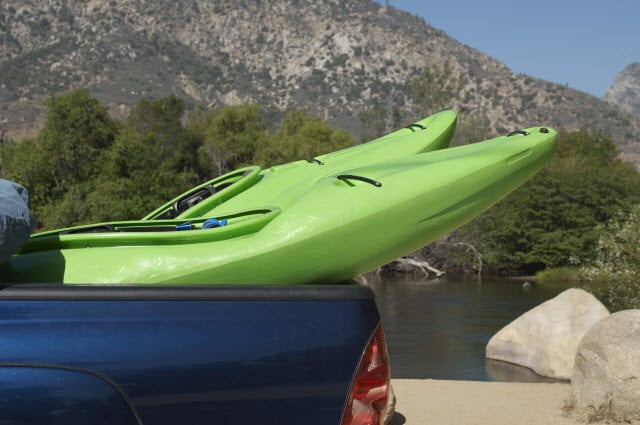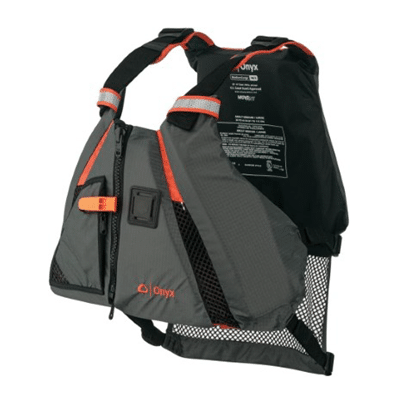Are you planning to go on a kayaking adventure soon? If so, you may be wondering how will transport your kayak to the water. Transporting a kayak in a truck bed is relatively simple and safe to do. There are some essential safety tips for transporting your kayak safely using this method.
If you don’t have a rack on the top of your vehicle, the task of transporting your kayak can be challenging. Luckily, if you drive a truck, you can transport your kayak in a truck bed with relative ease.
In this article, I’ll discuss where you should secure the kayak in the bed, how to position it in the truck bed, and other safety tips you need to know to ensure that you’re complying with road laws and are doing the best you can to keep yourself and other drivers safe.
I’ll also provide some tips that will help you avoid damaging your kayak while loading / unloading, and during the trip.
Let’s go over some useful tips for safely transporting a kayak in your truck bed!
About Transporting Your Kayak in a Truck Bed
As long as you properly secure your kayak and add a piece of red fabric to the end that overhangs the tailgate so trailing cars can see it and avoid your yak, there’s nothing wrong with transporting your kayak in your truck’s bed. Just keep safety of yourself and other drivers at the top of your mind.

But there are some tips to consider that will make loading, unloading, and securing your kayak(s) easier, and which will help you avoid damaging your boat.
I’ll run through my recommendations below:
Tips for Loading Your Kayak in a Truck Bed
- You will have to remove the tonneau cover, if you have one.
- Clean your truck bed and get rid of any heavy accessories that are installed there.
- Put a rubber mat on the truck bed floor to prevent damage to the floor of your truck bed or the kayak. The rubber mat will also be useful to prevent the kayak from slipping around when you put it back in the truck after going on the water. A rubber mat is important even if you are also using a spray-on bed lining.
- Do not use straps that are made of stretchy material, such as bungee cords. An example of a good material is nylon. You will use the straps to secure your kayak (in addition to other gear you are loading). It’s best not to use ratchet straps, as they may end up damaging the boat if they are tightened too much.
- In order to load the kayak, you will have to lower the tailgate. After that, transport the kayak on a trolley (or kayak cart). If you don’t have a trolley cart, you will have to ask someone to help you carry it. Lift the kayak and slide it onto the truck bed, making sure that the hull side is kept down.
- You can load the kayak into the truck bed with the extender open if you have a hitch truck bed extender or a sliding bed extender. Be aware, however, that there will be some overhang. As a result, you will need to be extra careful in securing the kayak. This is essential, so that you don’t create hazards for other drivers or break any laws. You will probably need to use red flags to help alert other drivers to the kayak.
- An alternative is to carry the kayak with the tailgate up, so that you don’t have overhang. With this arrangement, one end of the kayak will point upwards. Loading and transporting your kayak in this way will help make it less likely that there could be any kind of collision with other drivers. If you decide to do things this way, you will have to provide the tailgate with more cushioning. You should also keep it more securely strapped, to make sure there is no chance of it sliding out. If you have a relatively short kayak and a longer truck bed, you should find it easy to make the kayak fit completely inside.
- Avoid positioning the kayak in the middle of the bed. Instead, you should place it diagonally from corner to corner. This will help to cut down on risk that the kayak will slide. This kind of positioning should also make it easier to secure the kayak by tying it down.
- Find anchor points in order to strap the kayak. Two nylon straps will be required, as one is needed for the stern and another for the bow. Once you’ve put the straps through the grab handles, tie these to the anchor points. The anchor points should be on each side of the truck bed. Another step you can take is to also bring the straps across the kayak’s top on each end, tying it down to each anchor point.
- Secure a red flag at any part of the kayak that is hanging out the back of the truck.
- If you wish, you can install a bed extender from Amazon for under $100. This should create a vertical extension. This should remain in the close proximity to the tailgate. Its height should be at the same level as the top of the cab. A crossbar should be installed over the cab. You can then put the kayak on this and the extender.



